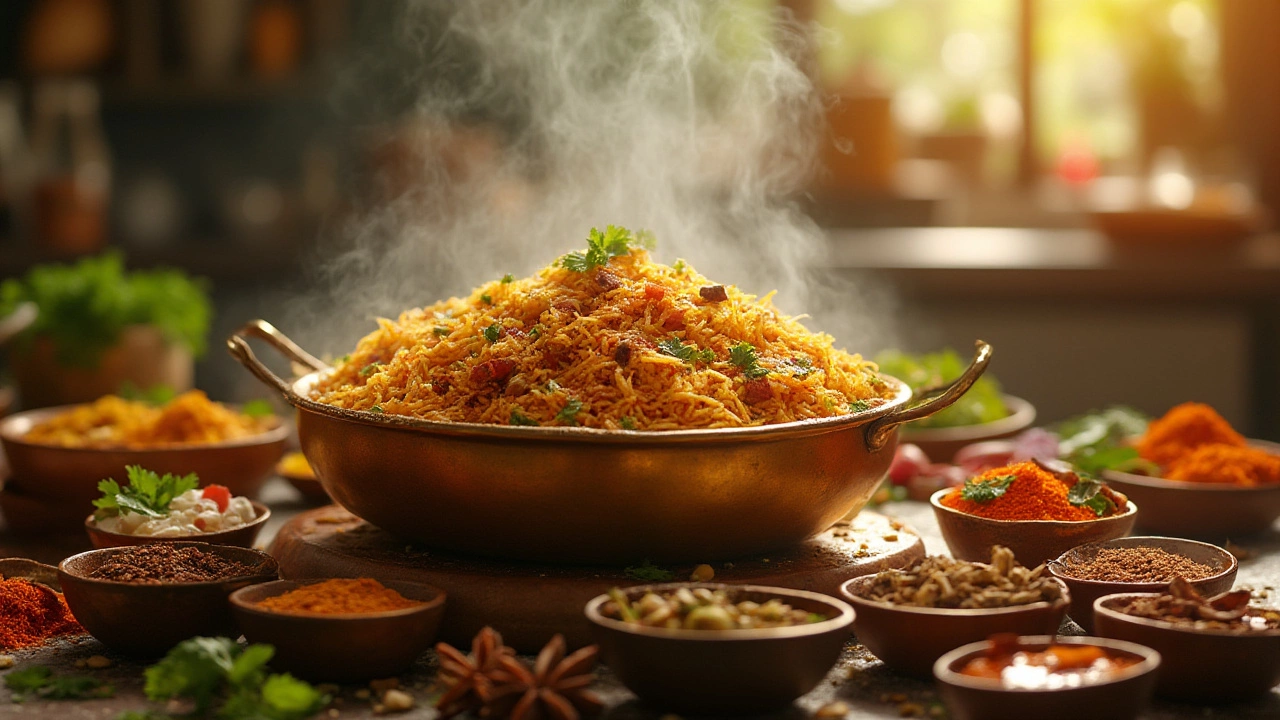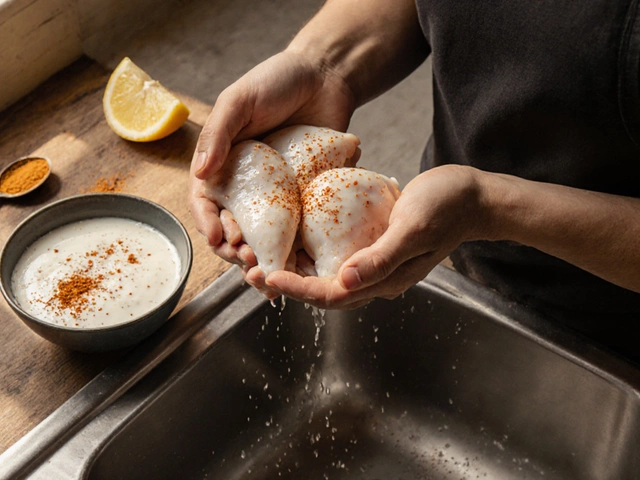Ever catch that scent wafting from a kitchen and instantly know biryani is on the menu? There’s nothing subtle about it. That signature biryani aroma is so powerful it can make a whole apartment building hungry. But here’s the thing—ask five people what makes up the secret smell of biryani, and you’ll get five different answers. It’s more than just cooking rice and meat. If you’ve ever tried making biryani at home and felt a little let down by the missing magic, you’re not alone. The allure isn’t just in the flavor or the look—it’s in what hits your nose before your first bite.
The Magic Mix: Spices Behind the Biryani Aroma
Lots of dishes use spices, but biryani is in a different league. The scent doesn’t come from just one ingredient—it’s a team effort of aromatics working together. The superstar? Cardamom. Open a pod and the citrusy, herbal scent practically jumps out. Next, there’s clove—it’s got that kick in the nostrils, almost like Christmas. Bay leaves toss in an earthy backbone, while cumin and black pepper add their own punch. It's not only about adding these spices but adding them whole, not ground. Whole spices release their oils slowly and have a more gentle, nuanced smell.
A huge tip: toasting the spices first in hot ghee or oil is the real secret handshake. This wakes up their aromas and allows them to mingle. You’ll want to go big on layering—drop whole cardamom, bay leaves, cloves, cinnamon sticks, and star anise both when you cook the rice and with the meat. Even seasoned biryani cooks admit those few seconds after hitting the oil with the first spice is the moment of truth. It’s the split-second when your kitchen either becomes a biryani haven or not.
And don’t sleep on mace and nutmeg. You need just the tiniest bit, but they give biryani that mysterious, almost bakery-like note. That “is that biryani or some secret dessert?” vibe comes mostly from these two. Don’t overdo it though—a small pinch is enough. If you want to go nerdy, food labs have done chemical analysis showing that cardamom, mace, and clove account for more than 70% of biryani’s fragrant compounds.
Rice, Meat, and the Role of Saffron
Now, the magic doesn’t stop at spices. Let’s talk basmati rice. There’s a reason no serious biryani chef would use anything else—good quality basmati has its own natural fragrance, called 2-acetyl-1-pyrroline if you want to sound smart. This compound also shows up in jasmine rice and even pandan leaves. It smells a little like popcorn and is what gives biryani its background 'toasted grain' note. Always rinse and soak your rice—this helps the grains puff up and hold their aroma better.
And then, there’s saffron. This is where the color and the upper notes of scent come in. The best biryani recipes bloom a pinch (yep, it’s expensive, but totally worth it) of saffron threads in hot milk and sprinkle it over the layered rice before final steaming. If you’ve ever been hit with that sweet, flowery edge that seems to float above the masalas, it’s saffron doing its thing. Don’t fall for turmeric as a cheap substitute. Turmeric dyes rice yellow but doesn’t have the perfume-like quality of saffron.
The meat—whether goat, chicken, or even beef—gets marinated in yogurt and spices before anything else. Here’s the fun part: marination not only flavors the meat, but also locks in those aromas so that every bite is an experience. For vegetarians, replace meat with paneer, jackfruit, or hearty veggies, but don’t skimp on the marination. Each marinated chunk soaks up the spices and then gives them back, slowly, as it cooks.

Slow Cooking: Unlocking the Aroma
You could get all the right ingredients but miss the aroma if you rush the process. The slow, dum cooking is not just tradition; it’s science. Sealing the biryani pot with dough traps all the scented steam, so nothing escapes. This ‘steam sauna’ actually helps the flavors settle and blend, creating that famous biryani perfume when you first lift off the lid. It’s probably the most suspenseful few seconds in the kitchen world.
At this point, finishing touches count. Fried onions (called birista) add an extra sweet and caramel note—slice thin, fry until dark gold, and scatter them over each layer. Fresh coriander and mint leaves lend a burst of freshness and sharpen the overall scent, like a green melody over the orchestra of spices.
Oh, and about rosewater or kewra water—don’t skip them. Just a few drops before closing the lid can change the whole game. Rosewater adds a floral touch and kewra, made from screwpine flowers, offers a slightly woody note. Together, these are the invisible big shots behind the biryani smell. Here’s a tip: if it smells almost too sweet before steaming, it’ll settle down and blend after. Don’t drown your rice in these waters—they’re powerful, and just a dash is enough.
Pro Tips for Getting That Signature Biryani Scent at Home
Want to nail biryani’s secret scent at home? Here’s the breakdown from spice aisle to table:
- Use only whole spices for maximum effect—cardamom, cloves, bay leaf, cinnamon, star anise, mace, nutmeg.
- Toast your spices in ghee until they’re just a shade darker and super fragrant. Watch them, don’t walk away.
- Opt for good basmati rice, at least 1-2 years aged for that nutty aroma. Soak for 30 minutes before cooking.
- Invest in real saffron and infuse in warm milk. Drizzle it on the top layer of rice just before the final steam.
- Layer in fried onions, mint, and coriander between rice and meat/veggie layers for each mouthful to be a flavor bomb.
- Add a spoon of rosewater and/or kewra water just before sealing your biryani pot.
- Never skip the dum—a final low, slow steam of at least 20 minutes. Use a tight lid or stick to the classic dough seal if you’re feeling traditional.
Spill alert: If your biryani ever smells flat, it probably needs a rounder masala base, fresher spices, or the missing floral note from rosewater/kewra. There’s no shortcut to the exact combination, so always taste and tweak. Think of it as a customizable perfume—you get to decide which notes shine. And never forget: amazing biryani smell doesn’t just happen in fancy restaurants. It’s all about the spice game, the order, and your willingness to wait for the flavors to marry.
That’s the real secret—the smell of biryani is actually the smell of intention, patience, and a whole orchestra of spices working together. Next time you lift the lid, breathe in and see how many notes you can name. Or maybe, just let it take you somewhere magical before the first bite.











